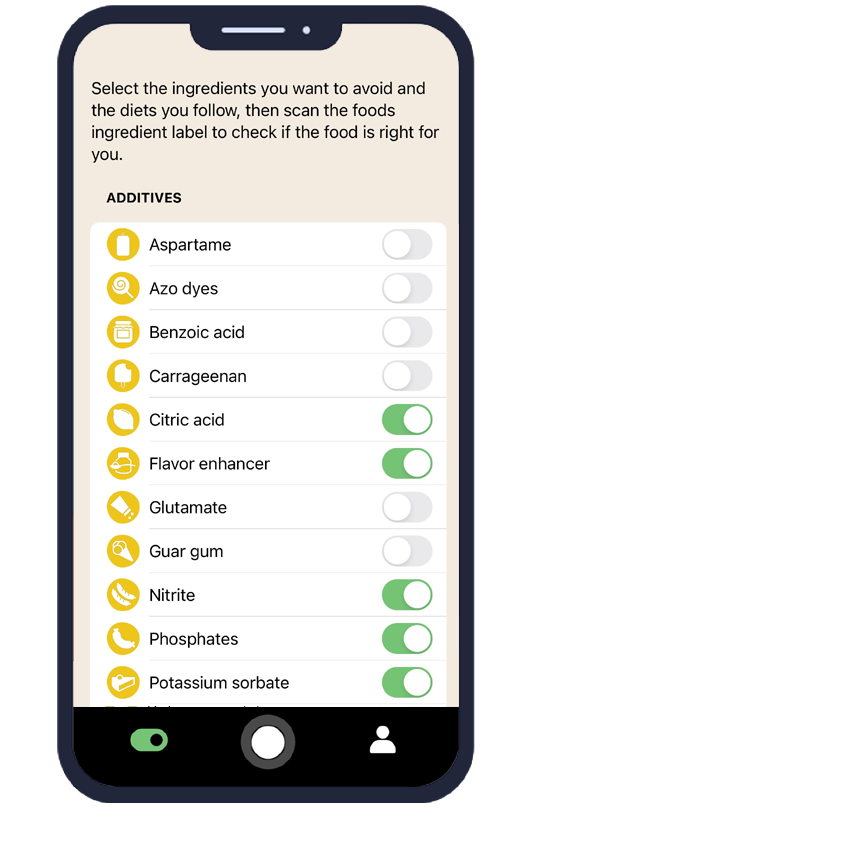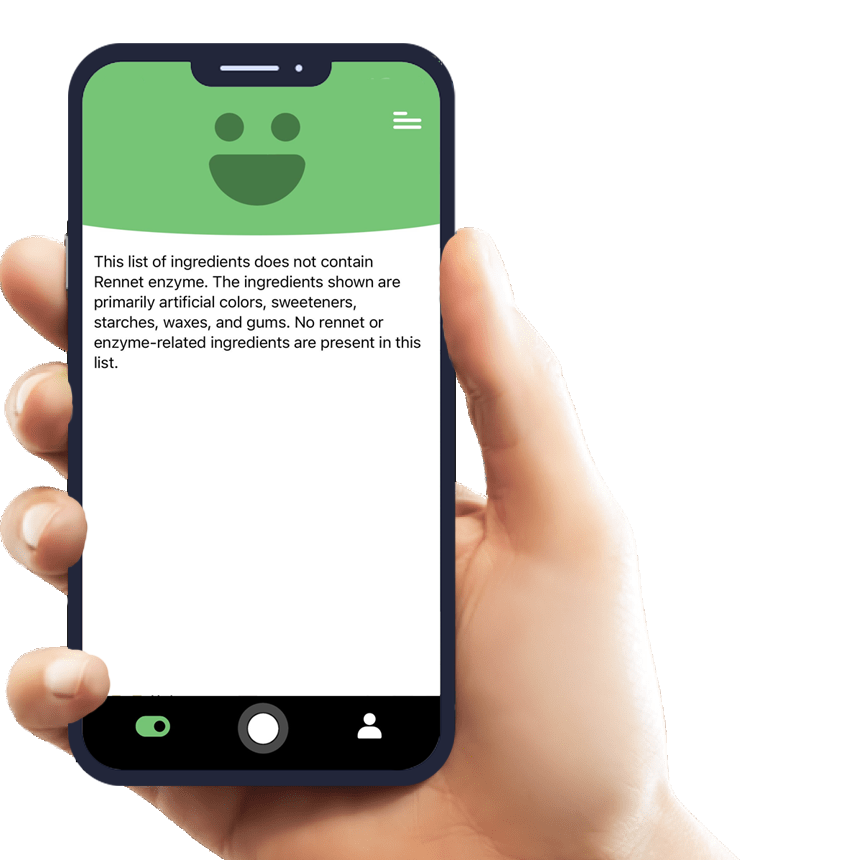Everything You Need to Know About Azo dyes and How AI Eat This Can Help
Azo dyes are synthetic food colorants widely used in the food industry to enhance the visual appeal of products. These artificial colors can be found in countless processed foods, from candies to beverages, making them nearly impossible to avoid without proper knowledge. For individuals with food additives sensitivities, allergies, or specific dietary restrictions, identifying Azo dyes in ingredient lists can be challenging and time-consuming.
The AI Eat This mobile app revolutionizes how consumers navigate food ingredients by instantly scanning and identifying Azo dyes in any product, regardless of language. This powerful tool empowers users to make informed dietary choices and maintain their health goals with confidence.
What Are Azo dyes and Where Are They Used?
Azo dyes represent the largest class of synthetic food colorants, characterized by their chemical structure containing nitrogen-nitrogen double bonds. These vibrant colors are created in laboratories and provide consistent, stable coloring that natural alternatives often cannot match. The food industry relies heavily on these additives to create visually appealing products that attract consumers.
Common Azo dyes used in food production include Tartrazine (E102), Sunset Yellow (E110), Carmoisine (E122), and Allura Red (E129). These food additives undergo rigorous testing before approval, but their widespread use has raised questions about long-term consumption effects.
Common Foods Containing Azo dyes
Azo dyes appear in numerous everyday food products, making awareness crucial for those following specific dietary restrictions. These synthetic colorants are particularly prevalent in processed and packaged foods designed to appeal to children and adults alike.
- Candies, gummies, and confectionery products
- Soft drinks, sports drinks, and flavored beverages
- Breakfast cereals and snack foods
- Ice cream, frozen desserts, and dairy products
- Baked goods, frosting, and cake decorations
- Processed meats and sausages
- Condiments, sauces, and salad dressings
Is Azo dyes Safe? What Does the Research Say?
Regulatory Approvals and Guidelines
The Food and Drug Administration (FDA) has approved several Azo dyes for use in food products after extensive safety evaluations. Similarly, the European Food Safety Authority (EFSA) and World Health Organization (WHO) have established acceptable daily intake levels for these food additives based on comprehensive scientific studies.
These regulatory bodies continuously monitor research and update safety guidelines as new information becomes available. Current approved levels are considered safe for the general population when consumed within established limits.
Potential Risks and Azo dyes Intolerance
While Azo dyes are generally recognized as safe, some individuals may experience Azo dyes intolerance or sensitivity reactions. Research has suggested potential links between certain Azo dyes and hyperactivity in sensitive children, leading to mandatory warning labels in some countries.
Symptoms of Azo dyes intolerance may include headaches, skin reactions, digestive issues, and behavioral changes in susceptible individuals. Those with aspirin sensitivity or asthma may be at higher risk for adverse reactions to specific Azo dyes.
How AI Eat This Helps You Avoid Azo dyes
The AI Eat This app transforms the challenging task of identifying Azo dyes into a simple, instant process. Using advanced artificial intelligence and image recognition technology, the app scans ingredient lists through your smartphone camera and immediately identifies any Azo dyes present in the product.
Users can set personalized filters based on their specific dietary restrictions, including Azo dyes avoidance. The app works with ingredient lists in any language, making it invaluable for international travelers or those shopping for imported products. When you test the app AI - eat this? to avoid Azo dyes, you'll discover how effortlessly it integrates into your shopping routine.
The app's database continuously updates with new products and ingredients, ensuring accuracy and reliability. Real-time notifications alert users when scanning products containing Azo dyes, preventing accidental consumption and supporting long-term health goals.
Who Should Consider Avoiding Azo dyes?
Several groups of people may benefit from limiting or avoiding Azo dyes in their diet. Parents of children with attention deficit hyperactivity disorder (ADHD) or behavioral sensitivities often choose to eliminate these food additives as part of comprehensive management strategies.
Individuals with documented Azo dyes intolerance, aspirin sensitivity, or chronic urticaria may need to avoid specific synthetic colorants. Those following clean eating principles or seeking to minimize processed food consumption also frequently eliminate Azo dyes from their dietary restrictions.
People with compromised immune systems or multiple chemical sensitivities may find that avoiding synthetic food additives, including Azo dyes, helps reduce their overall toxic burden and improves their quality of life.
Tips for Maintaining an Azo dyes-Free Diet
Successfully avoiding Azo dyes requires strategic shopping and meal planning approaches. Reading ingredient labels becomes second nature, but the AI Eat This app eliminates guesswork and saves valuable time during grocery shopping.
Focus on whole, unprocessed foods that naturally avoid synthetic additives. Fresh fruits, vegetables, lean proteins, and whole grains form the foundation of an Azo dyes-free diet while providing superior nutritional value.
When purchasing packaged foods, look for products labeled "no artificial colors" or "naturally colored." Many manufacturers now offer Azo dyes-free alternatives that use natural colorants like beet juice, turmeric, or spirulina.
Meal preparation at home provides complete control over ingredients and eliminates concerns about hidden Azo dyes in restaurant or processed foods. Batch cooking and freezing homemade meals ensures convenient, safe options are always available.
The Future of Food Safety and Azo dyes Awareness
Consumer awareness about food additives continues growing, driving demand for cleaner, more transparent ingredient lists. The Centers for Disease Control and Prevention monitors food-related health trends, including reactions to synthetic additives like Azo dyes.
Technology solutions like AI Eat This represent the future of personalized nutrition, empowering consumers to make informed choices aligned with their health goals and dietary restrictions. As artificial intelligence advances, these tools will become even more sophisticated and accessible.
Conclusion
Understanding Azo dyes and their presence in food products is essential for making informed dietary choices, especially for those with sensitivities or specific dietary restrictions. While these synthetic colorants are generally considered safe by regulatory authorities, individual responses vary, and some people benefit from avoiding them entirely.
The AI Eat This app provides an invaluable solution for identifying and avoiding Azo dyes in food products, regardless of language or location. By leveraging cutting-edge technology, the app simplifies the complex task of ingredient analysis and supports users in maintaining their chosen dietary restrictions.
Take control of your food choices and protect your health by downloading evidence-based nutrition tools like AI Eat This. Download AI Eat This? for free testing today and experience the confidence that comes with knowing exactly what's in your food!

70 filters
With over 70 filters, you can easily avoid certain ingredients and follow your dietary preference.

Paleo

Pescetarian

Ultra-processed food

Vegan







































































